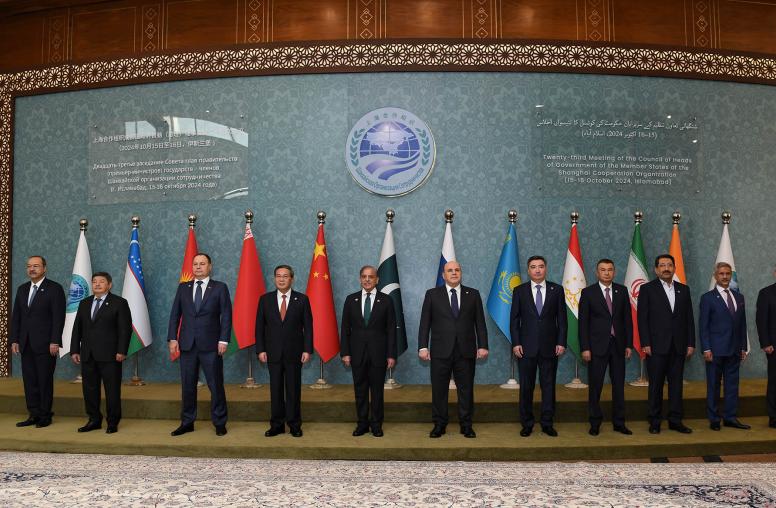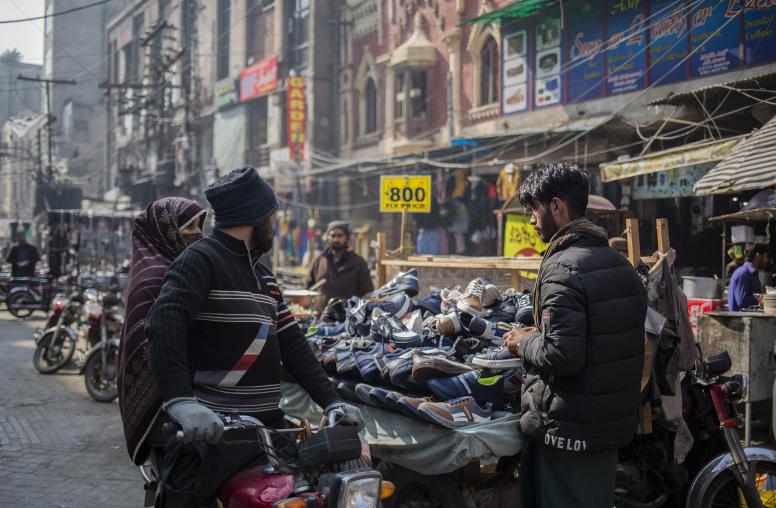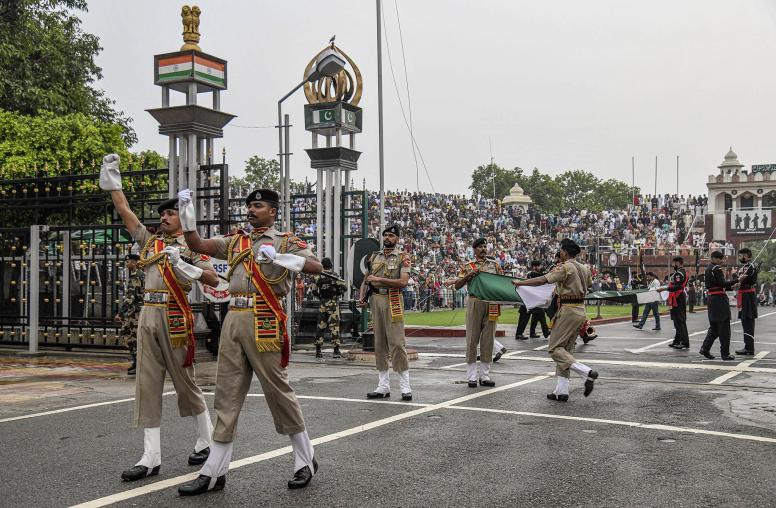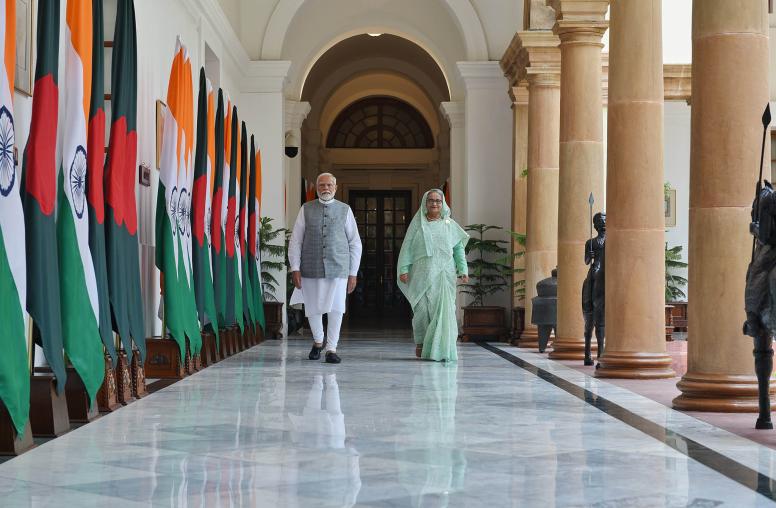Pakistan’s Looming Coronavirus Crisis
Already in dire economic shape, a COVID-19 outbreak could further destabilize Pakistan.
In the weeks since Pakistan’s first confirmed cases of coronavirus, the country’s response has laid bare troubling weaknesses in governance, public health, and economic stability—and raised serious questions about Pakistan’s capacity to weather a large-scale outbreak absent significant international assistance. USIP’s Cyril Almeida and Ambassador Richard Olson look at how friction between the military and federal government poses a risk to Pakistan’s democracy, the possible avenues for medical and economic relief, and what COVID-19 means for the situation in Kashmir and Pakistan’s role in the Afghan peace process.

Pakistan’s influential military has asserted greater authority amid the crisis, as the chief of Pakistan’s army has begun assisting government efforts, and the government has summoned the military to enforce social and economic restrictions. Is the increased role of the military necessary and does it pose a danger to Pakistan’s democratic progress?
Almeida: A rickety public-health sector, uneven civilian law enforcement capabilities, and a well-resourced, politically minded military all but guarantee a greater role for the military going forward. As the virus spreads across Pakistan, the important question is whether the military will see its role as supporting civilian efforts or leading the national response. Complicating the picture early on is Prime Minister Imran Khan’s reluctance to embrace stringent measures to “flatten the curve”; a reluctance that has led the provinces to bypass the federal government and directly seek the military’s assistance.
Much will depend on the pace and extent of the virus’s spread across Pakistan, but a threat to the civilian set-up should not be ruled out. Pakistan’s democratic progress has effectively stalled in recent years, and the administration of Prime Minister Khan has struggled to govern and manage the economy in its first 18 months.
In the current stage of the coronavirus spread in Pakistan, the threat to the government is quite low, as soft lockdowns are being reasonably enforced by the provinces and the focus is on boosting emergency relief for the most vulnerable segments of the population. But as the virus begins to have visible effects at the national level, and if the government response continues to lag, the military may become more assertive and seek to directly manage the crisis response. Finally, if the virus explodes in Pakistan, social unrest spreads, the food supply chain and the health sector are stretched near collapse, and the federal government is paralyzed, the replacement of the current government or a direct military takeover should not be ruled out. These are early days, however, and crystal-gazing is a perilous undertaking. The possibility of muddling through always exists.
Pakistan’s economy was already on shaky grounds before COVID-19. As large swaths of the country are placed on lockdown, what’s the impact on Pakistan’s economic situation and how can it be mitigated?
Almeida: The timing of the pandemic could scarcely be crueler for Pakistan. Locked in an IMF program since last summer, the government’s macroeconomic stabilization efforts had only just begun to yield their benefits—while workers, businesses, and consumers had already been impacted. Now, the coronavirus has brought the informal economy to a halt and curtailed the formal economy to the production and distribution of essential goods and services.
The potential effects of a national lockdown can be gauged from the megacity of Karachi, which is in the second week of an ever-tightening lockdown imposed by the Sindh government. Reports from the city indicate tremendous strain on government and private food distribution networks for vulnerable segments of the population. The need for state assistance has exploded and is unlikely to be bridged by private sector donations. So, a prolonged national shutdown could quickly be paired with spiraling food and humanitarian crises, with serious consequences for social stability and law enforcement.
Mitigating the economic impact will depend on the trajectory the coronavirus takes in Pakistan. An approximately $7.5 billion economic relief and stimulus package announced by Prime Minister Khan last week is an essential starting point, with an attempt to strike a balance between the immediate needs of the most vulnerable and measures to assist big businesses and their employees. Emergency aid from the IMF and a respite from the pre-existing IMF program have already been sought by the government. Aid from traditional allies such as China, Saudi Arabia, and UAE could be more difficult to secure as those economies struggle with the effects of coronavirus and falling oil prices. But lower oil prices and perhaps deferred oil payments will be of significant benefit to the Pakistani economy. Ready or not, Pakistan must brace itself for staggering health, economic, and social challenges.
Reports indicate that Pakistan does not have the resources needed to adequately address the crisis—will they have to turn to international sources, such as China, to help handle the outbreak?
Olson: Pakistan’s health care system is under stress in the best of times, and it’s not difficult to imagine it collapsing if COVID-19 hits in full force. As noted above, Pakistan’s economic situation is parlous, so presumably Pakistan would turn to its traditional partners—the United States and China—for support. While USAID has had extensive programs in the health sector, the Trump administration is de-emphasizing assistance as an element of the relationship and funding levels have been declining. That said, the administration has announced a $2 million-dollar program for Pakistan; $1 million for monitoring and preparation, and $1 million in redirected funding from the assistance pipeline. As noted, other traditional donors are facing their own domestic needs, and, in the case of the Gulf countries, declining oil revenues.
So, it is likely that Pakistan will turn to China, especially since Beijing is on a soft-power offensive by offering both material and technical assistance in many affected countries. Since China has successfully “flattened its curve,” it now has surplus capacity in the medical field. Meanwhile, the U.S. is likely to be a net importer of medical supplies, at least in the near term. This dynamic may change as the pandemic matures, particularly if Pakistan turns for help to international financial institutions—over which the U.S. has great clout. However, as an overall trend, it seems likely that the novel coronavirus will accelerate what is already a secular trend: Pakistan’s increasing alignment with China and diminishing dependence on the United States.
How will the virus’s spread impact Pakistan’s approach to the region, particularly in regard to the Afghan peace process and the conflict over Kashmir?
Olson: The key question is Afghanistan, and how the U.S. proceeds with the peace process. At the moment, the U.S. finds itself in the lamentable position of having concluded a preliminary deal with its opponent, while its ally—the government of Afghanistan—faces deep internal political divisions. If COVID-19 hits Afghanistan hard, which is entirely possible, the U.S. may find it has no choice but to accelerate its troop withdrawal, relying upon its security assurances with the Taliban and letting the chips fall where they may. Such a scenario would almost certainly plunge Afghanistan into chaos and civil war. Whatever preferences Pakistan might have, in such a scenario, its energies would be almost entirely absorbed by managing its western, rather than its eastern, front.
In a more optimistic scenario, perhaps the threat of a viral pandemic could bring the factions in Kabul together and allow for the onset of intra-Afghan negotiations. While it would undoubtedly be a bumpy road, this scenario might allow Pakistan to pay more attention to what it regards as the unresolved Kashmir crisis. But it will find that it has few cards to play—India resolutely rejects outside mediation, and its actions last summer suggest that it rejects any role for Pakistan bilaterally. Were Pakistan to resort to proxy attacks, it would almost certainly face being blacklisted by the Financial Action Task Force at a time when it can least afford such ostracization. For the time being, the Kashmir issue is likely to fester.



